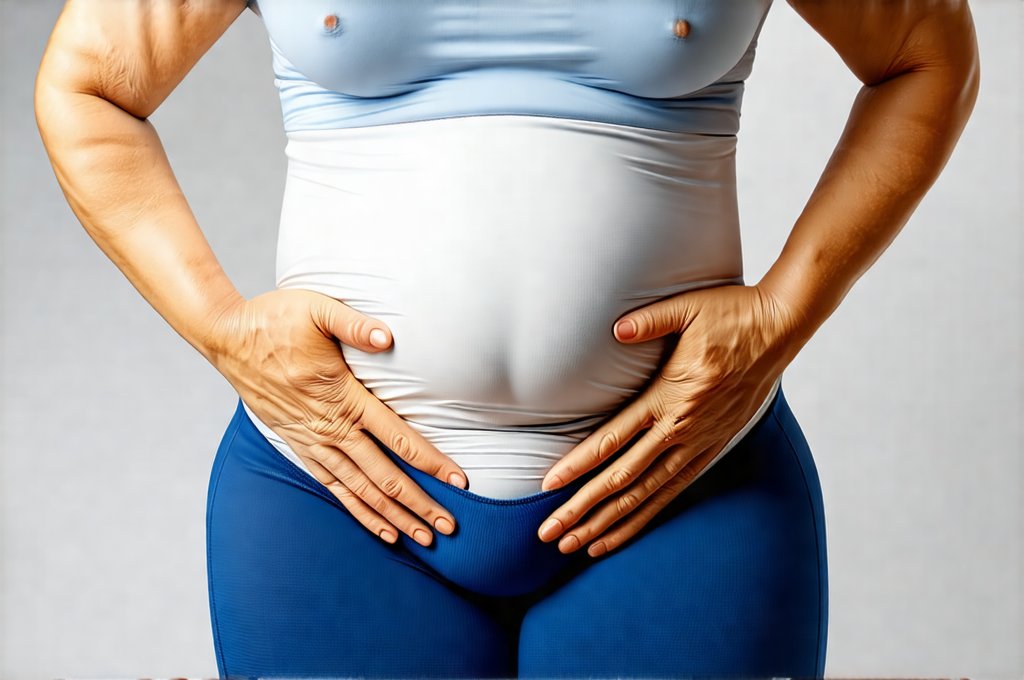The digestive system is a remarkably intricate network, highly sensitive to pressure and space. While we often focus on what we eat for optimal gut health, the how – specifically how our clothing impacts that process – receives far less attention. For many, tight-fitting garments around the waist are simply a fashion choice or a matter of comfort, but these choices can inadvertently contribute to digestive discomfort and even chronic conditions like acid reflux. The human body isn’t designed for sustained compression in this area; instead, it thrives on freedom of movement that allows internal organs to function efficiently.
This isn’t about abandoning style or embracing exclusively loose clothing. It’s about understanding the physiological consequences of constricted space around the abdomen and making informed choices about what we wear. Chronic pressure can disrupt normal digestive processes, leading to a cascade of issues ranging from bloating and heartburn to more serious problems like delayed gastric emptying and even functional dyspepsia. The impact isn’t always immediate or dramatic; often it’s a subtle but cumulative effect that gradually compromises digestive wellbeing over time. This article will delve into the ways tight clothing contributes to reflux and digestive tension, offering insight into how to mitigate these effects for a healthier gut.
How Tight Clothing Impacts Digestion
The abdominal cavity houses several vital organs involved in digestion, including the stomach, intestines, liver, gallbladder, and pancreas. These organs require sufficient space to expand, contract, and move food along the digestive tract effectively. When tight clothing constricts this area, it directly interferes with these natural processes. The lower esophageal sphincter (LES), a muscular ring that prevents stomach acid from flowing back into the esophagus, is particularly vulnerable. Increased abdominal pressure forces the contents of the stomach upwards, putting undue strain on the LES and increasing the likelihood of acid reflux. This isn’t merely about aesthetic discomfort; frequent acid reflux can erode the esophageal lining, leading to chronic heartburn, esophagitis, and potentially even Barrett’s esophagus—a precancerous condition.
Beyond the LES, tight clothing disrupts peristalsis – the wave-like muscle contractions that move food through the digestive tract. Compressing the intestines slows down this natural movement, leading to constipation, bloating, and a build-up of gas. This delayed transit time also allows more opportunities for fermentation within the colon, potentially exacerbating symptoms like abdominal discomfort and irritable bowel syndrome (IBS). The impact extends beyond just the gut itself; constricted breathing due to tight clothing can contribute to shallow respiration, impacting diaphragm function and further hindering digestive processes as well as increasing stress levels.
Furthermore, prolonged compression can affect organ positioning. Over time, consistently squeezing these organs may cause them to shift slightly or become compressed against each other, potentially leading to discomfort and functional impairments. This isn’t a dramatic anatomical change overnight, but rather a gradual adaptation the body makes in response to chronic pressure. It’s important to remember that our bodies are incredibly adaptable, but there’s a limit to how much sustained compression they can tolerate without experiencing negative consequences. If you experience reflux frequently, it may be time to investigate why some people get reflux from water and what solutions are available.
The Connection Between Pressure and Reflux
Reflux isn’t simply about excess stomach acid; it’s fundamentally linked to increased intra-abdominal pressure. Think of the abdomen as a contained system – any increase in pressure within that system needs to find an outlet. Tight clothing acts like another layer of containment, amplifying this pressure. This is why individuals experiencing bloating or gas often report feeling more uncomfortable in tight clothes—the existing distension is exacerbated by external compression. The increased pressure directly impacts the LES, weakening its ability to maintain a secure barrier between the stomach and esophagus.
The effect isn’t limited to clothing tightness; even seemingly innocuous habits like overeating or bending over can contribute to this pressure. Combining these factors with tight clothing creates a perfect storm for reflux symptoms. For example, wearing restrictive pants after a large meal significantly increases the risk of heartburn and indigestion. Moreover, individuals prone to hiatal hernia – a condition where part of the stomach protrudes through the diaphragm – are particularly susceptible to reflux triggered by abdominal pressure.
It’s also important to consider how stress impacts this process. Stress often leads to tense muscles in the abdomen, further increasing intra-abdominal pressure. When combined with tight clothing, this creates a vicious cycle: stress -> muscle tension -> increased pressure -> reflux -> anxiety about reflux -> more stress. Breaking this cycle requires addressing both the physical and emotional components of digestive health, perhaps by utilizing mind-body approaches to relieve tension.
Understanding Abdominal Compression & Its Effects
Abdominal compression isn’t just a matter of discomfort; it’s a physiological disruption with far-reaching consequences. – Firstly, prolonged compression reduces blood flow to the digestive organs, impacting their ability to function optimally. Adequate blood supply is essential for nutrient absorption and waste elimination. – Secondly, it can interfere with lymphatic drainage, leading to fluid retention and bloating. The lymphatic system plays a crucial role in removing toxins and waste products from the body.
- Thirdly, compression affects the vagus nerve, which regulates digestive function. A compressed vagus nerve can lead to slowed gastric emptying and impaired intestinal motility. This nerve is often referred to as the “rest and digest” nerve; its optimal functioning is vital for a healthy gut. The effect isn’t limited to direct physical pressure either. Even seemingly mild restrictions, like tight belts or underwear that digs into the abdomen, can contribute to these issues over time. Understanding the link between tight waistbands and digestive health is a great first step toward improved wellbeing.
Identifying Trigger Clothing & Making Adjustments
Many everyday clothing items unknowingly contribute to digestive tension. – Tight jeans and trousers are a common culprit, especially those with low-rise cuts which put more pressure on the lower abdomen. – Corsets or waist trainers, designed for compression, are particularly problematic as they constrict the abdominal organs significantly. – Even seemingly harmless leggings can cause issues if they’re too tight or made from non-breathable materials.
Identifying your personal trigger clothing is crucial. Pay attention to when you experience digestive discomfort and what you’re wearing at that time. Experiment with looser fits, different fabrics (natural fibers like cotton and linen are more breathable), and avoiding restrictive garments altogether. Simple adjustments can make a significant difference in your digestive wellbeing. Consider replacing tight belts with elastic waistbands or choosing underwear that doesn’t dig into your abdomen. It is also important to consider the impact of tight clothing on acid reflux.
Minimizing Pressure During Daily Activities
Beyond clothing choices, there are several steps you can take to minimize abdominal pressure during daily activities. – Practice mindful eating: avoid overeating and chew food thoroughly to aid digestion. – Maintain a healthy posture: slouching compresses the abdomen and restricts breathing. – Incorporate regular exercise: physical activity promotes healthy bowel movements and reduces stress. – Manage stress levels: practice relaxation techniques like yoga or meditation to reduce abdominal tension.
- Avoid bending over immediately after eating: this increases pressure on the stomach. – Consider intermittent breaks throughout the day to loosen tight clothing or stretch your abdomen. These small changes can collectively create a more digestive-friendly environment and significantly improve your overall wellbeing. Remember that even seemingly minor adjustments to lifestyle and wardrobe can have substantial positive effects on your gut health. If you suspect something more serious, it’s important to determine what is silent reflux. And don’t forget that maintaining a healthy gut can also involve choosing the right microbiome-safe travel snacks and habits when you are on the go!


















